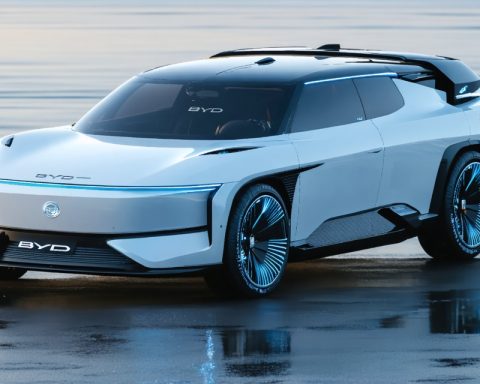- Hobart and William Smith Colleges have expanded their EV-charging infrastructure to 20 stations, enhancing their commitment to sustainability.
- The expansion, led by Professor Tom Drennen and Chris Button, was funded mainly through state grants totaling $200,000.
- All charging stations are powered by renewable energy, supporting the colleges’ goal of carbon neutrality.
- The charging stations are free to use, promoting the adoption of electric vehicles within the campus community.
- Professor Drennen anticipates further expansion of EV infrastructure, aligning with the increasing trend of electric vehicle use.
- Charging stations can be easily located via the EV Connect or PlugShare apps.
- This initiative underscores Hobart and William Smith’s leadership in fostering an environmentally conscious education sector.
Beyond the stately halls of Hobart and William Smith Colleges, a quiet revolution hums to life. Nestled in the Finger Lakes region of New York, this historic institution has taken a significant stride towards a sustainable future by dramatically expanding its electric vehicle-charging facilities. Responding astutely to a community increasingly turning to electric vehicles, the campus has installed 14 new charging stations, augmenting their capacity to 20, a move illustrating visionary leadership and a commitment to environmental stewardship.
As electric vehicles become commonplace along the tree-lined driveways of the colleges, the initial half-dozen chargers soon proved inadequate against the workload demands of eco-conscious students and faculty. Recognizing this shift, Professor Tom Drennen, alongside Chris Button from Sodexo, spearheaded an ambitious upgrade driven by state grants, which deftly shouldered the bulk of the $200,000 project.
Imagine the scene now; sleek, silent vehicles recharging under clear skies, connected to stations powered entirely by renewable energy. This initiative not only aligns with but surpasses the colleges’ sustainability milestone of achieving carbon neutrality ahead of schedule. In a symbolic twist, these chargers are freely available, a strategic choice fostering even greater adoption of green transportation modalities across the campus’s verdant expanses.
Drennen, an advocate for future-forward thinking, predicts that this burgeoning trend is only the beginning. He foresees an impending landscape dotted with even more chargers as the electric vehicle movement accelerates. In five years, perhaps the campus, currently buzzing with quiet energy, will transform even further into a hub of sustainable innovation.
Users can easily locate these charging stations through the EV Connect or PlugShare apps, seamlessly integrating them into daily routines. The colleges’ bold steps reinforce Hobart and William Smith’s reputation as leaders in the educational sector’s push towards an environmentally conscious future. For an institution gazing towards greener horizons, these efforts encapsulate a pivotal moment in its storied legacy.
Hobart and William Smith’s endeavor is a testament to what can be achieved when vision aligns with action. In championing electric vehicles, the colleges set an exemplary standard, reminding us all that each charge represents a step toward a brighter, cleaner tomorrow.
How Hobart and William Smith Colleges Are Leading the Charge in Campus Sustainability
Enhanced Analysis of Electric Vehicle Charging Infrastructure
Nestled in the scenic Finger Lakes region, Hobart and William Smith Colleges have embarked on a significant journey toward sustainability by expanding their electric vehicle (EV) charging facilities. This move positions the colleges as a leader in the burgeoning EV movement, reflecting a commitment to environmental stewardship and setting a benchmark for similar institutions.
Market Trends & Industry Insights
Electric vehicles (EVs) are becoming mainstream due to increasing environmental awareness and supportive government policies. According to the International Energy Agency (IEA), global EV sales are projected to grow by 35% annually, reaching 145 million by 2030. Educational institutions like Hobart and William Smith Colleges are critical facilitators of this transition, providing necessary infrastructure that aligns with this market trend.
Pressing Questions Answered
1. Why are these initiatives important for colleges?
Colleges play a pivotal role in shaping future generations’ attitudes towards sustainability. By installing EV chargers, Hobart and William Smith Colleges encourage eco-friendly practices among students and faculty, promoting a culture of sustainability that extends beyond the campus.
2. How is the project funded?
The $200,000 project was largely funded by state grants, demonstrating effective use of available resources to achieve sustainability goals.
3. Why is the use of renewable energy significant?
Powering the charging stations with renewable energy helps reduce the colleges’ carbon footprint further. This is crucial in the fight against climate change and achieves the institution’s sustainability milestone of reaching carbon neutrality earlier than planned.
Real-World Impact & Use Cases
– Students and Faculty: The charging stations are strategically free to use, incentivizing community members to adopt electric vehicles, thus reducing reliance on fossil fuels.
– Community Influence: As a role model for local businesses and institutions, Hobart and William Smith Colleges’ sustainable practices can inspire broader shifts towards greener technologies in the region.
Future Predictions
With visionary leadership from advocates like Professor Tom Drennen, the trend of installing more charging stations is expected to continue. This is crucial as more students and faculty inevitably switch to electric vehicles.
Controversies & Limitations
While the initiative is largely positive, challenges such as the initial financial layout and ongoing maintenance of these stations remain. Additionally, the reliance on state funding can be a limiting factor, as not all institutions have access to such grants.
Pros & Cons Overview
Pros:
– Promotes sustainable transportation.
– Lowers carbon emissions with renewable energy-powered stations.
– Enhances the institution’s reputation for environmental leadership.
Cons:
– High initial installation cost.
– Potential need for increased capacity as EV usage grows.
– Possible dependence on external funding sources.
Actionable Recommendations
– Integrate Charging Stations with Academic Programs: Develop coursework or projects around the use and impact of EVs and renewable energy to directly involve students in campus sustainability.
– Engage the Community: Host workshops or forums about the importance of sustainable practices and the use of EVs to spread awareness.
Quick Tips
– Planning a Visit? Use apps like EV Connect or PlugShare to locate charging stations easily.
– Considering Installation? Explore state and federal grants that support sustainable infrastructure projects.
For more insights on enhancing sustainability on college campuses, visit Hobart and William Smith Colleges.
Hobart and William Smith Colleges exemplify how strategic initiatives can significantly impact the broader goal of achieving environmental sustainability. By aligning vision with action, they set a significant standard for others to follow in the educational sector.














